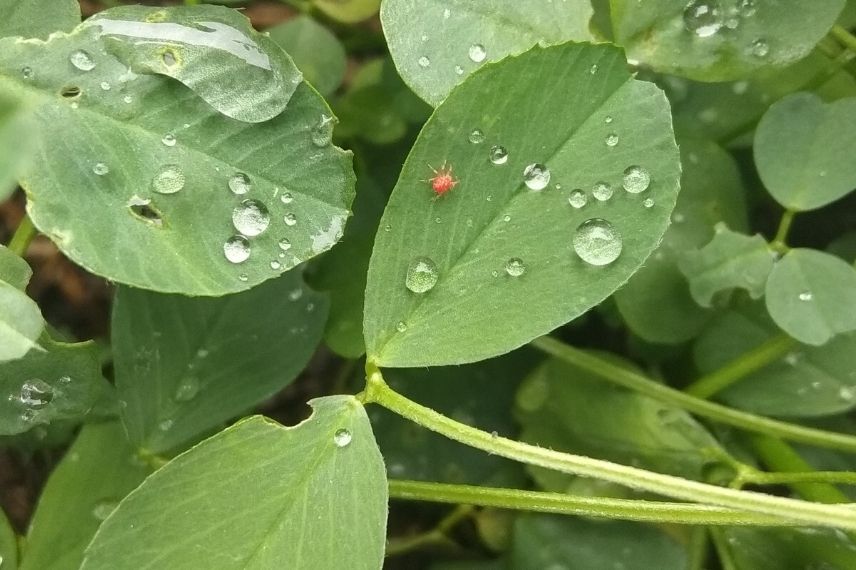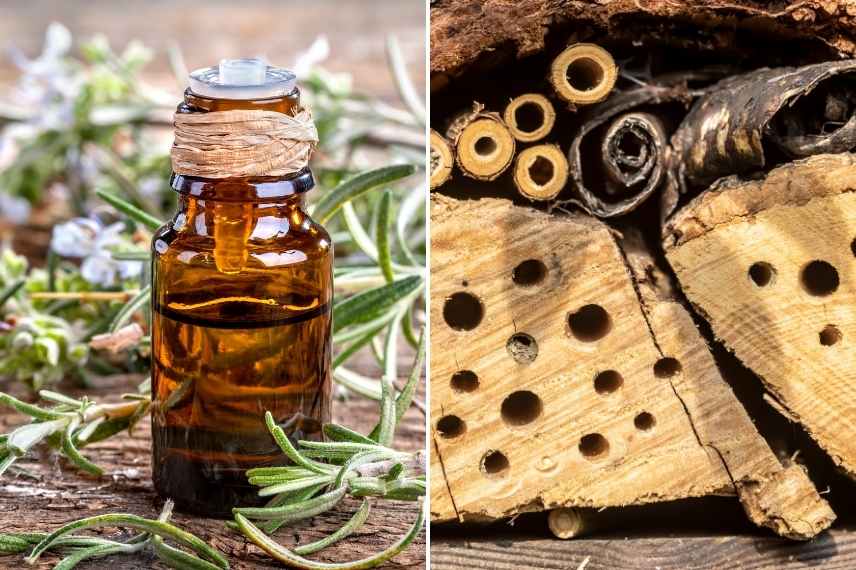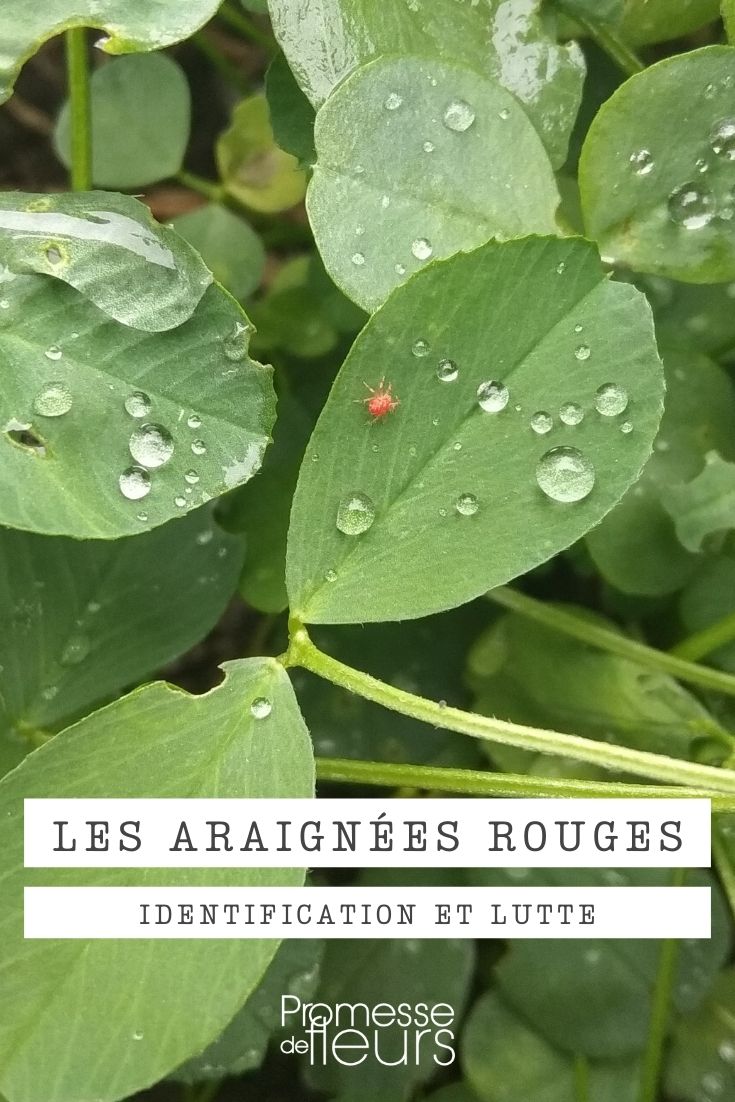
Red spider mite: identification and treatment
Recognise and control them effectively
Contents
Wrongly called “red spider”, this small garden mite is a pest less well known than aphids or slugs. Yet able to form colonies of several hundred individuals, these little sap-suckers can finish off a plant within a few dozen days! Discover how to identify this pest and the control measures to counter these all-too-voracious creatures.
How to recognise a red spider mite attack?
Barely 1 mm when fully grown, they are quite hard to spot with the naked eye on a plant. It is often only when the first damage appears on a plant that we notice their presence. This tiny mite can be different colours (red, yellow or green) depending on parasitised plant. They love hot, dry conditions and so preferentially attack balcony, indoor and greenhouse plants.
When conditions are highly favourable for red spider mites (temperature of 30°C), a single female can lay around a hundred eggs that will reach adult stage in barely a week. You can easily imagine the exponential growth a colony of these critters can take during summer. Indeed, outlook is rather favourable for them thanks to the hot, dry summers climate change is expected to bring.
Fortunately, they have difficulty (because of their size) moving from one plant to another, which avoids many additional problems. Nevertheless, take care not to spread them via clothing or garden tools.

On which plants are red spider mites found?
Red spider mites are mites that can attack hundreds of different plants. They are highly generalist in their attacks. Favourite victims in garden include :
- Vegetables and small fruits in vegetable patch (aubergine, carrot, squash, cucumber, peas, currant bushes, strawberries, tomatoes…) ;
- Fruit trees (peach trees, pear trees, apple trees…) ;
- Ornamental plants (cyclamens, dahlias, hydrangeas…) ;
- Conifers or indoor houseplants.
They prefer to attack tender leaves or needles that are easier to pierce with their rostrum (mouthpart).
Another factor favouring their appearance is excess nitrogen in the soil. This will make your plants more succulent and fragile. Mites can then more easily pierce the epidermis of plants that tend to grow too quickly because of excess fertiliser.
What are the symptoms on the plant?
One of the easiest symptoms to recognise is the presence of bristles on your young plants. These bristles are actually the origin of the parasitic organism’s name. When a colony begins to expand, they give the impression of a spider’s web. If you spray water on your young plants, they will become even more noticeable.
Leaves will then become speckled with white or yellowish spots and will end up falling completely desiccated. They can also have a greyish appearance. In case of periodic outbreaks, plant may quickly succumb, unable to carry out photosynthesis properly.

Tiny red spider mite… which nonetheless causes considerable damage
Read also
Aphid: identification and treatmentHow to control this pest?
Preventive control
- Limit applications of high-nitrogen fertilisers that will make your plants fragile and attractive to parasitic pests;
- Prefer adding compost rather than a fast-acting fertiliser. Your plant will be better strengthened against attacks;
- Spray your plants’ leaves regularly (preferably in the evening) with fresh rainwater to maintain a humid environment in your greenhouse or in your home around sensitive specimens (beware of blight for your tomatoes). If weather is very dry, also spray early in the morning;
- Try to keep soil as cool as possible thanks to mulching (grass clippings, hay, wood chips, landscaping fabric…) or a drip-irrigation system.
- Spray in advance a nettle manure or a horsetail decoction.
Treatment options
- Use 20–25 drops of rosemary essential oil mixed first with 3–4 drops of liquid black soap and 5 mL rapeseed oil. Then dilute all in 1 litre of water and spray;
- A garlic decoction (30 g/litre of water) diluted to 30% and sprayed onto plant gives good results. To prevent eggs from hatching, repeat sprays every 3 days for about fifteen days;
- If plant is overwhelmed by mites, cut it out and burn it. This may seem radical, but better to lose a vegetable plant or a single plant than a whole rank/bed;
- It is possible to use biological control by introducing other predatory species that will feed on mites. Under cover or in vegetable patch, you can use a natural predator of red spider mite such as Phytoselulus persimillis. It is another small mite of similar size and colour that feeds on eggs, larvae and adults of red spider mite;
- Green lacewing larvae feed on eggs of this pest. Don’t hesitate to place an insect hotel or a pile of dead branches near your sensitive plants to offer them lodging.
François’s tip: Chemical insecticidal products exist for mites but we do not recommend them because they are harmful to your health and kill all other insects in contact with the product. Among these there will surely be beneficials that would have been useful in fighting this same parasitic organism! Moreover, mites will over time become resistant to the chemical molecule used, year after year. The product will lose its effectiveness whatever happens.

Rosemary essential oil, insect hotel: 2 methods of control and prevention of red spider mite
- Subscribe!
- Contents
































Comments